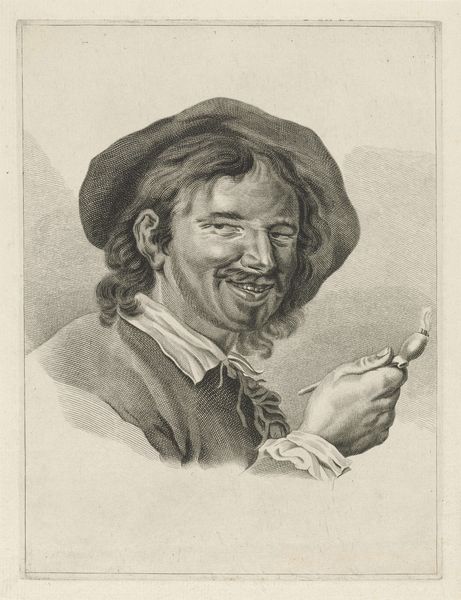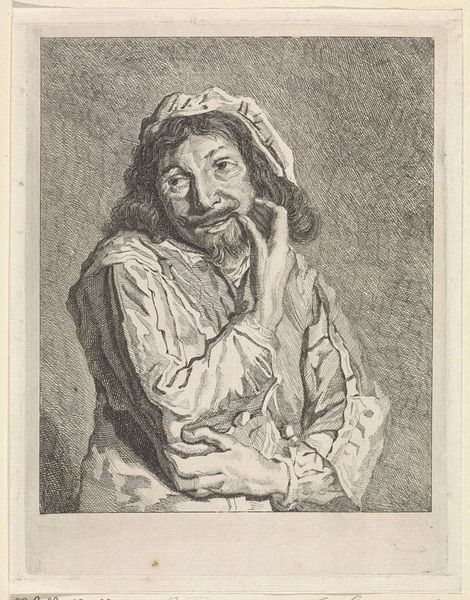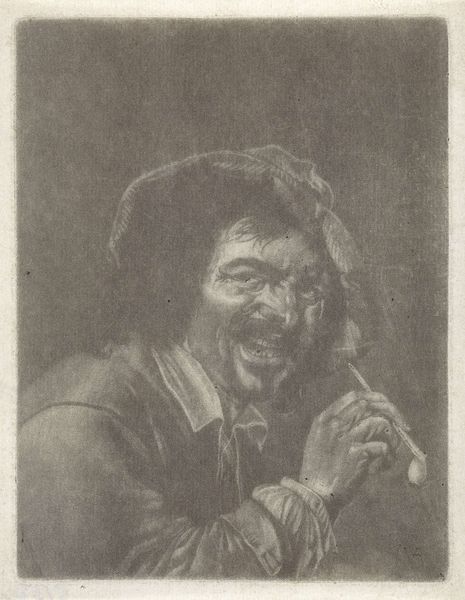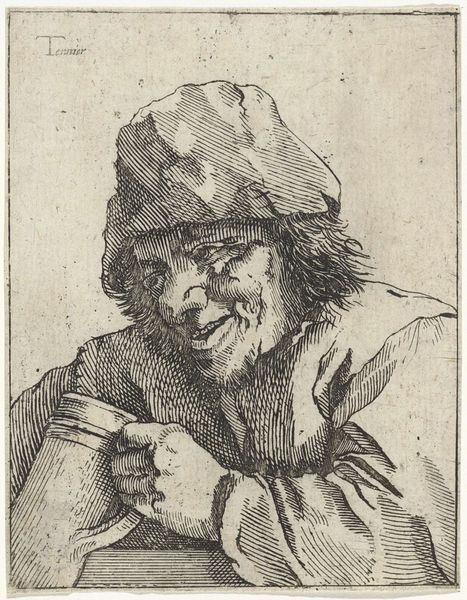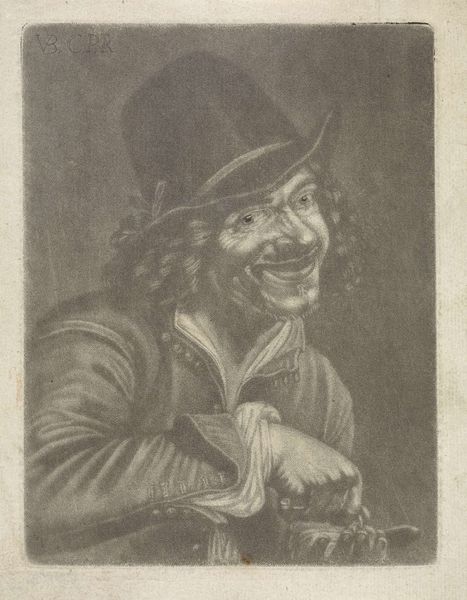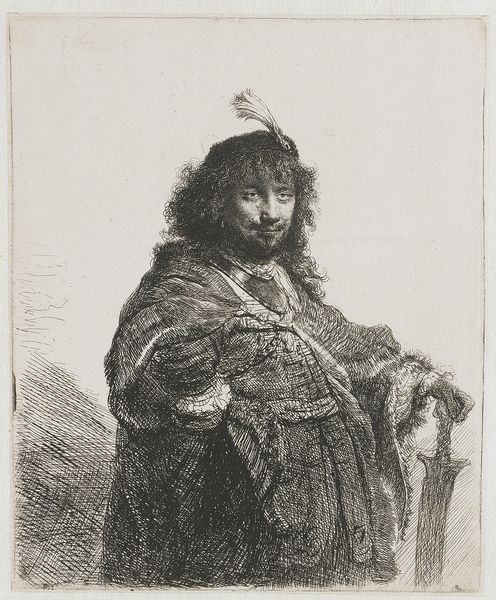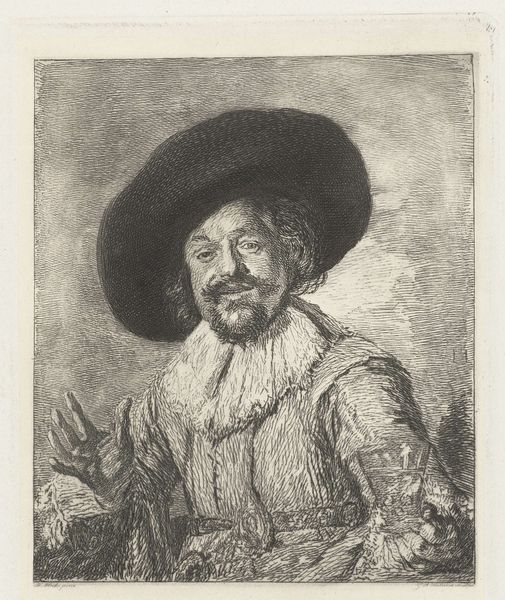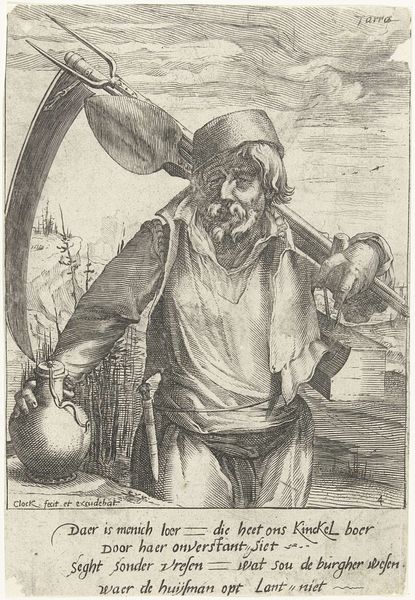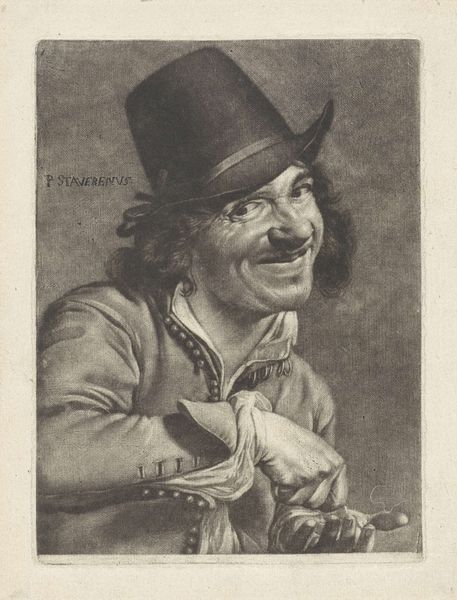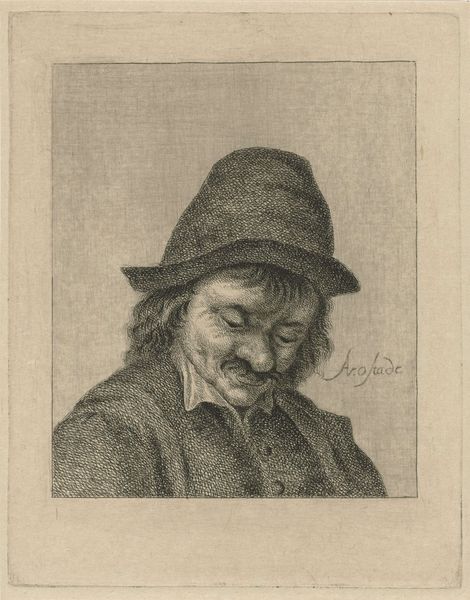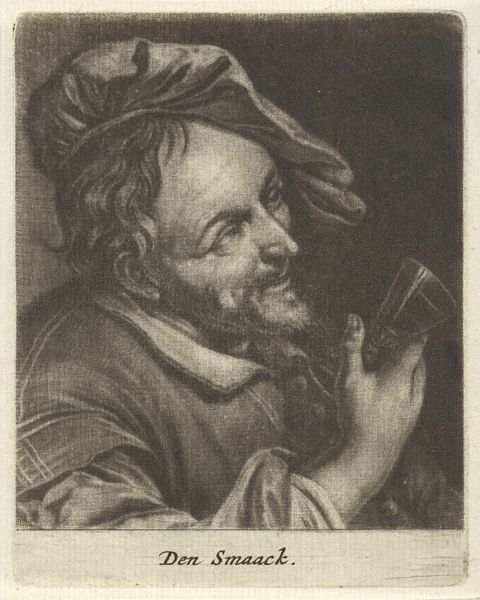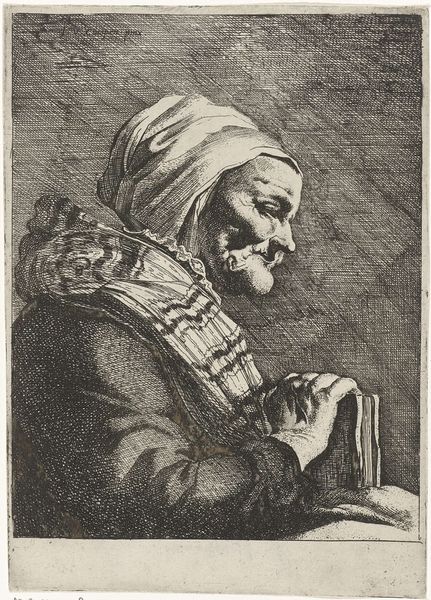
print, etching
#
portrait
#
baroque
#
dutch-golden-age
# print
#
etching
#
charcoal drawing
#
genre-painting
Dimensions: height 269 mm, width 215 mm
Copyright: Rijks Museum: Open Domain
Curator: Here we have an etching called "Meneer 'Peeckelhaering'," made sometime between 1630 and 1640, after a painting by E. Hals and printed by Jonas Suyderhoef. He looks like quite the character, doesn't he? Editor: He does! He's got a kind of earthy charm, I’d say. Immediately I see the man’s dark shadows contrasting sharply with the plain backdrop—all made from etching techniques that must have involved a range of skilled hand labor to produce multiple copies. This wasn’t mass production, but something very deliberate about access here. Curator: Precisely. This is a print, meant for wider distribution than a unique oil painting. The name 'Peeckelhaering,' translates to pickled herring, hinting at this fellow’s, shall we say, relaxed state? See how he holds the flagon, slightly off-kilter? Editor: And his clothes are intriguing—buttons, stripes…but slightly worn. Details pointing to a lower social order and probably a modest budget for the print, thus impacting who had access to seeing or distributing his work in a world without social media. Even the size—probably made for a cabinet or study. Curator: Exactly. Suyderhoef’s skills in rendering fabrics is really highlighted here. Think of how it feels. It's not fine silk; it's homespun linen or something more…robust. Even his slightly askew cap. Hals's original intention gets wonderfully translated in this accessible medium. Editor: It gets you wondering what the daily labor was like that supported the material existence for him as well as whoever purchased his image and what would he sell today, this “Pickled Herring” fellow of ours. I think the artist highlights it without ever speaking directly of that type of burden. The labor of etching alone… the acids used...it all brings material realities sharply into view. Curator: Indeed. This seemingly simple portrait provides access to so many avenues of interpretation: class, labor, even humor. His almost drunken leer has survived through time and continues to connect with audiences centuries later. Editor: Definitely makes you consider the everyday people absent from formal history. Food sellers, bar tenders, day laborers...Etching brings us into the sphere of seeing their value today if perhaps undervalued in art history until recently, it gives food for thoughts, doesn’t it?
Comments
No comments
Be the first to comment and join the conversation on the ultimate creative platform.
